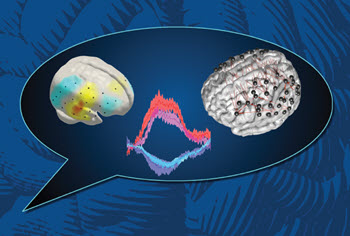Celebrating 30 Years of Functional Near Infrared Spectroscopy
Guest Editors: David Boas, Judit Gervain, David Highton, Yasuyo Minagawa, and Rickson Coelho Mesquita

The Neurophotonics Special Section Celebrating 30 Years of Functional Near Infrared Spectroscopy is published in Neurophotonics Volume 10, issues 1 and 2. The articles are collected here.
Special Guest Editorial: Thirty Years of Functional Near-Infrared Spectroscopy
David Highton, David Boas, Yasuyo Minagawa, Rickson C. Mesquita, and Judit Gervain
Neurodevelopment
Using functional near-infrared spectroscopy to study the early developing brain: future directions and new challenges
Judit Gervain, Yasuyo Minagawa, Lauren Emberson, and Sarah Lloyd-Fox
Reproducibility of infant fNIRS studies: a meta-analytic approach
Jessica Gemignani, Irene de la Cruz-Pavía, Anna Martinez, Caroline Nallet, Alessia Pasquini, Gaia Lucarini, Francesca Cavicchiolo, and Judit Gervain
Clinical Applications
Applications of near-infrared spectroscopy in neurocritical care
Rachel Thomas, Samuel S. Shin, and Ramani Balu
Functional near-infrared spectroscopy in pediatric clinical research: Different pathophysiologies and promising clinical applications
Anne Gallagher, Fabrice Wallois, and Hellmuth Obrig
Changes in functional neuroimaging measures as novices gain proficiency on the fundamentals of laparoscopic surgery suturing task
Yaoyu Fu, Pushpinder Walia, Steven D. Schwaitzberg, Xavier Intes, Suvranu De, Anirban Dutta, and Lora Cavuoto
Neurodegeneration and Psychiatric Applications
Illuminating neurodegeneration: a future perspective on near-infrared spectroscopy in dementia research
Sruthi Srinivasan, Emilia Butters, Liam Collins-Jones, Li Su, John O’Brien, and Gemma Bale
Current opinions on the present and future use of functional near-infrared spectroscopy in psychiatry
Rihui Li, Hadi Hosseini, Manish Saggar, Stephanie Christina Balters, and Allan L. Reiss
Psychedelics and fNIRS neuroimaging: exploring new opportunities
Felix Scholkmann and Franz Vollenweider
Wearable, High-Density, and Optical Imaging
Wearable, high-density fNIRS and diffuse optical tomography technologies: a perspective
Ernesto E. Vidal-Rosas, Alexander von Lühmann, Paola Pinti, and Robert J. Cooper
Brain space image reconstruction of functional near-infrared spectroscopy using a Bayesian adaptive fused sparse overlapping group lasso model
Xuetong Zhai, Hendrik Santosa, Robert T. Krafty, and Theodore J. Huppert
Speckle Contrast and Interferometric Techniques
Interferometric diffuse optics: recent advances and future outlook
Wenjun Zhou, Mingjun Zhao, and Vivek J. Srinivasan
Diffuse correlation spectroscopy: current status and future outlook
Stefan A. Carp, Mitchell B. Robinson, and Maria A. Franceschini
fNIRS Methods and Modeling
Introduction to the shared near infrared spectroscopy format
Stephen Tucker, Jay Dubb, Sreekanth Kura, Alexander von Lühmann, Robert Franke, Jörn M. Horschig, Samuel Powell, Robert Oostenveld, Michael Lührs, Édouard Delaire, Zahra Aghajan, Hanseok Yun, Meryem Yücel, Qianqian Fang, Theodore Huppert, Blaise deB. Frederick, Luca Pollonini, David Boas, and Robert Luke
Shedding light on functional near-infrared spectroscopy and open science practices
Caroline Kelsey, Jebediah Taylor, Laura Pirazzoli, Renata Di Lorenzo, Eileen F. Sullivan, and Charles A. Nelson
Performance comparison of systemic activity correction in functional near-infrared spectroscopy for methods with and without short distance channels
Franziska Klein, Michael Lührs, Amaia Benitez-Andonegui, Pauline Roehn, and Cornelia Kranczioch
Using preregistration as a tool for transparent fNIRS study design
Philipp A. Schroeder, Christina Artemenko, Jessica E. Kosie, Helena Cockx, Katharina Stute, João Pereira, Franziska Klein, and David M. A. Mehler
How much do time-domain functional near-infrared spectroscopy (fNIRS) moments improve estimation of brain activity over traditional fNIRS?
Antonio Ortega-Martinez, De'Ja Rogers, Jessica Anderson, Parya Farzam, Yuanyuan Gao, Bernhard Zimmermann, Meryem Yücel, and David Boas
Revealing the spatiotemporal requirements for accurate subject identification with resting-state functional connectivity: a simultaneous fNIRS-fMRI study
Sergio Luiz Novi Junior, Alex De Castro Carvalho, Rodrigo Menezes Forti, Fernado Cendes, Clarissa Yasuda, and Rickson Mesquita
Dual-slope imaging of cerebral hemodynamics with frequency-domain near-infrared spectroscopy
Giles Blaney, Cristianne Fernandez, Angelo Sassaroli, and Sergio Fantini
Two-in-one system and behavior-specific brain synchrony during goal-free cooperative creation: an analytical approach combining automated behavioral classification and the event-related generalized linear model
Mingdi Xu, Satoshi Morimoto, Eiichi Hoshino, Kenji Suzuki, and Yasuyo Minagawa


